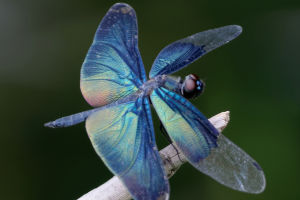Owls belong to the order Strigiformes and are one of the most fascinating birds of prey in the world. With over 130 species, these birds can be found on all continents except for Antarctica.
They are primarily nocturnal carnivores, but some species also hunt during the day. Owls are famous for their distinctive features, such as the radiating feathers around their eyes and their cat-like face. In this article, we will explore more about the unique characteristics of these amazing birds.
Physical Characteristics
The owl's plumage is mostly brown, with fine spots scattered around its body. Their feathers are dense and fluffy, which allows them to fly with almost no noise. The female owl is generally larger than the male, and both have large and broad heads with short, laterally flattened, and strong beaks.
Their apex is hooked, and the base of the beak lacks a wax membrane and is mostly covered by stiff feathers. The owl's eyes are located directly in front of its face, giving them excellent depth perception during hunting, especially in low light conditions.
Interestingly, the large eyes are fixed in the owl's eye sockets and cannot be turned at all, so the owl has to keep turning its head. They also have a flexible neck that allows the face to be turned backward and the head has a range of movement of 270° due to a special cervical vertebrae structure.
The owl's ears are also unique, with the left and right ears being asymmetrical. The left ear canal is significantly wider than the right, and the left ear has a well-developed eardrum. Most owls also bear a cluster of ear feathers that form a human-like auricle.
The auditory nerve is well-developed in owls. For example, a hamlet owl weighing only 300 grams has about 95,000 auditory nerve cells, while a crow weighing about 600 grams has only 27,000.
The reason why owls will sleep during the day
Owls are primarily nocturnal animals, and they have excellent light sensitivity, which allows them to see perfectly at night with only a faint light. However, during the day, the environment can be very blinding for them and not conducive to their activities. This is why the owl uses the daytime to rest and recuperate for the night.
Owls have several features that help them hunt at night. Their soft feathers allow them to fly with very little noise, making it easier to hide their movements in the dark. The owl's sense of hearing is also very strong, and even if there are creatures they cannot see in the dark, they can listen to determine where they are.
Owls are not only fascinating birds of prey, but they also play a crucial role in the ecosystem.
As nocturnal hunters, they help regulate the population of rodents and other small animals, which can cause damage to crops and spread diseases. In addition, owls are an important indicator species, which means that their presence or absence can signal changes in the environment.
Unfortunately, many owl species are threatened or endangered due to habitat loss, hunting, and other human activities. Conservation efforts, such as protecting their habitats and reducing human disturbance, are essential to ensure the survival of these magnificent birds.
Owls are fascinating birds of prey that possess unique characteristics that enable them to survive and thrive in the dark. From their distinctive physical features to their exceptional hunting skills, these birds are a wonder of nature.
Understanding more about owls can help us appreciate and protect these majestic creatures, as well as the ecosystems they call home.


